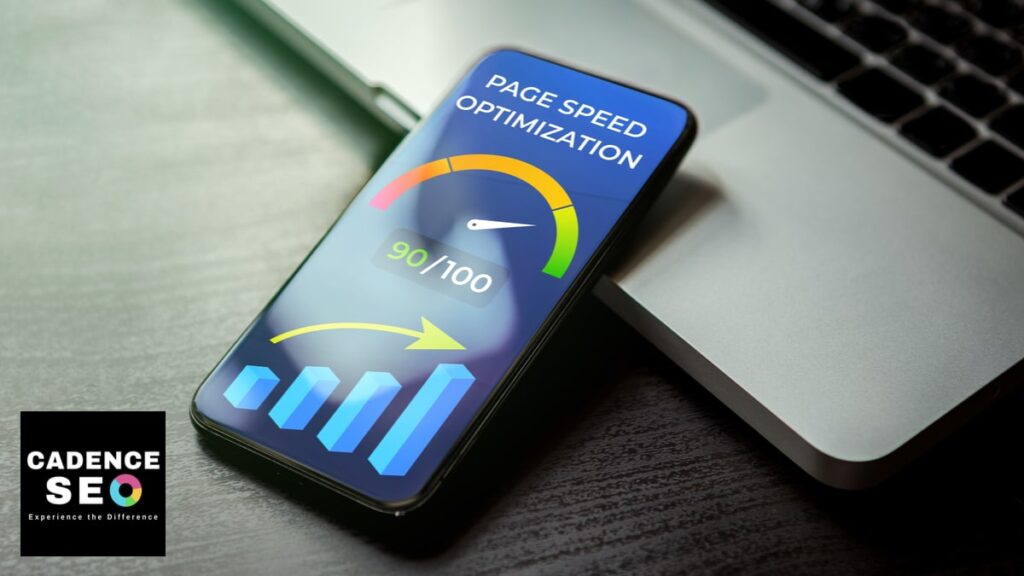With our pagespeed tool you can see how long it takes for your site to fully load. A fast loading time can help increase the chances of your site ranking at the top of Google. Enter a URL below to check the pagespeed of your site and get a detailed report.

We know that every second counts when trying to keep visitors on your site for as long as possible. Technical SEO is a vital and often overlooked tool. This is why we’ve put together a quick test tool that helps you gauge your site’s page speed so you can see exactly how fast it loads and then make changes if necessary.
A page speed test analyzes the load times of your web pages and displays the results in a series of tables that display all of the areas your site has for improvement. It shows you how long it takes for your site to load, and it gives you an indication of how well optimized your page is. The more optimized your page is, the faster it will load. The less optimized it is, the slower it will be to load and render.
Let’s start with the basics: Page speed refers to how quickly a user can access a site. The faster a site loads, the better. If your site takes too long to load, users will just go elsewhere.
A good page speed for SEO is a page that loads quickly and clearly, with no lag time or freezes. Google tries to rank websites that have a page load time of under two seconds, so you want to make sure your site loads in that timeframe. This is because Google’s algorithm ranks pages based on how quickly they load. The faster your site loads, the higher it will rank on search results.
If you’re a business owner, you already know that your site needs to be fast. You also probably know why—after all, there’s nothing more frustrating than waiting for a page to load when you’re trying to buy something quickly or get the information you need. But it’s not just about getting frustrated, page speed can have an impact on your bottom line.
So why is page speed so important? After all, if you have great content, who cares if it takes a little longer to load? Well, there are several reasons that you should care about page speed:
So what does this mean for your business? It means that if you want to keep your visitors engaged and interested in what you have to say, they need a fast-loading website so they can see what’s inside quickly and easily. And that’s where CadenceSEO comes in!
The time it takes for a web page to load is a crucial factor in making your site user-friendly. A slow site can frustrate customers, lead to fewer conversions, and cause them to abandon their shopping carts.
For starters, you’ll want to get an idea of how page speed is measured. There are two metrics that determine page speed: time to first paint (TTFP) and page load time. TTFP is how long it takes for the browser to render the first bit of content on your page; this happens when the user clicks on a link. Page load time is how long it takes for all the content on your page to load, including images, scripts, etc.
While there are many factors that go into making sure your site loads as quickly as possible, here are some of the most common ones that have been shown to have an impact on page speed.
A website with a lot of third-party elements can slow download times because each one has to make its own request for data from its host server. If you’re using a lot of third-party elements on your site—and especially if they’re not optimized for speed—consider replacing them with custom code instead. It’s all about the number of requests that your server must process, and how quickly it can do that. The more requests are made, and the larger they are, the slower your page will load. This is because your server must process each request individually and send back the page as requested—which takes time!
Redirects are a necessary evil—they’re used by search engines and marketers alike to help users find their way around a website—but they can slow download times. Make sure you’re redirecting users to the right place, and don’t use too many!
It’s important to have high-quality images that look great on all devices and browsers, but you don’t want them taking up too much space or making it hard for your visitors to access content quickly! We recommend using compression tools like TinyPNG or ImageOptim to shrink them down before uploading them.
Plugins can be really helpful if they’re used correctly, but they can also cause problems with loading time due to their heavy codebase. If you notice that your site takes longer than usual after installing a new plugin, try disabling it temporarily while monitoring how fast it loads again—and then see if you can disable another one.
Phone: 888-210-2602
Email: Info@cadenceseo.com
1430 S Boulder Street Unit A, Gilbert , AZ 85296
Unlock the Secrets of SEO Success: Stay Ahead with Our Latest Insights and Updates. Sign up today!
© 2025 CADENCESEO. All Rights Reserved. Privacy Policy